History of the Cannons: From Warfields to Drawing Rooms

The Timeless Journey of the Cannon: From Battlefield Legend to Luxurious Home Decor
From the thunder of ancient battlefields to the silence of royal halls, the cannon has journeyed centuries, wielding power, commanding respect, and finally resting in grace as a symbol of legacy and strength.
After its invention, the cannon changed not only the condition of wars but also the direction of history itself. Time has witnessed countless battles where cannons played a decisive role, tipping the scales of victory in favor of those who mastered their might.
Let us trace the remarkable journey of this legendary weapon—from its invention in the 13th century to its transformation into a timeless decorative icon.
History of the Cannons
It is widely believed that the cannon, the cradle of gunpowder technology, was first invented in China. What began as an explosive experiment soon evolved into a battlefield revolution. Not long after its invention, the cannon was powerful enough to decide the fate of empires.
Here’s a century-by-century account of the cannon’s evolution through different cultures and epochs.
Spread and Evolution of Cannons: Century-by-Century Overview
13th Century: Origins in China

The journey of the cannon begins in 13th-century China, where the invention of gunpowder during the Tang Dynasty (9th century) laid the foundation for early explosive weaponry. The first known hand cannon—the Heilongjiang Hand Cannon—dates to around 1280 CE. Crafted from bronze or cast iron, these rudimentary weapons used explosive force to hurl projectiles.
The Mongol conquests played a crucial role in spreading this technology westward into Central Asia, the Islamic world, and eventually Europe. These early prototypes were deadly, albeit unpredictable, signaling the dawn of a new age in warfare.
14th Century: Arrival in the Islamic World and Medieval Europe

By the early 1300s, cannons had reached the Middle East, and by the mid-14th century, Europe. The sight of massive bombards hammering fortified city walls marked a new era of siege warfare.
Fortresses that once stood impregnable began to crumble under the thunder of artillery. Though immobile and heavy, these early European cannons transformed battle strategies forever.
15th Century: Shaping Empires and Turning Points
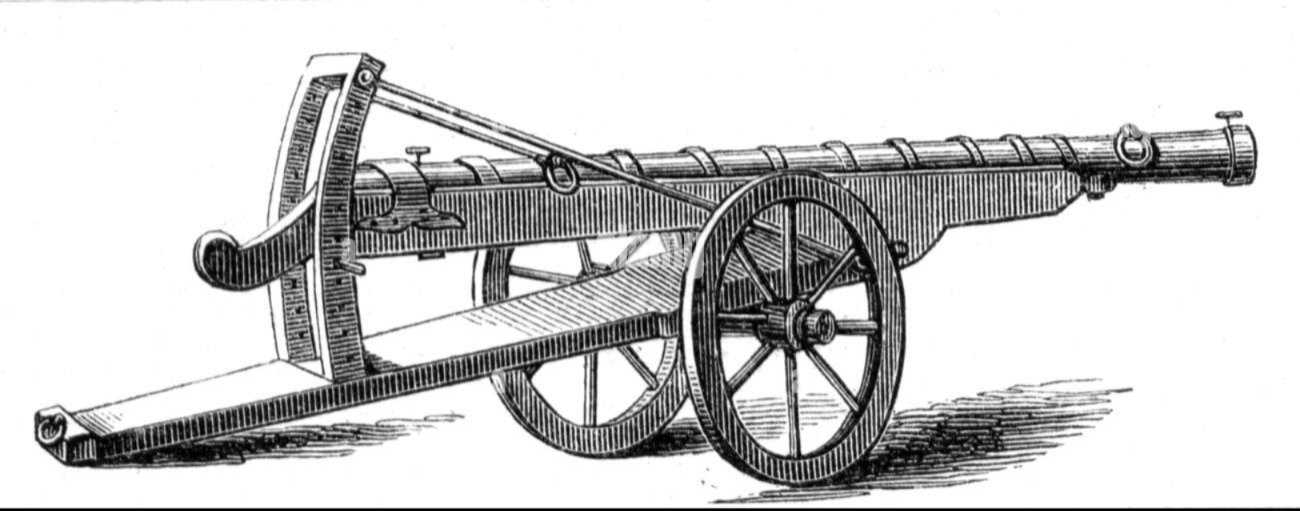
The year 1453 became a historic watermark. The mighty Ottoman Empire, under Sultan Mehmed II, used colossal cannons to breach Constantinople’s Theodosian walls, ending the Byzantine Empire. This victory wasn’t just military—it was symbolic of a shift in global power.
In Europe, the battlefield was no longer ruled by knights alone. Artillery became the new kingmaker.
16th Century: Cannons Roar in India
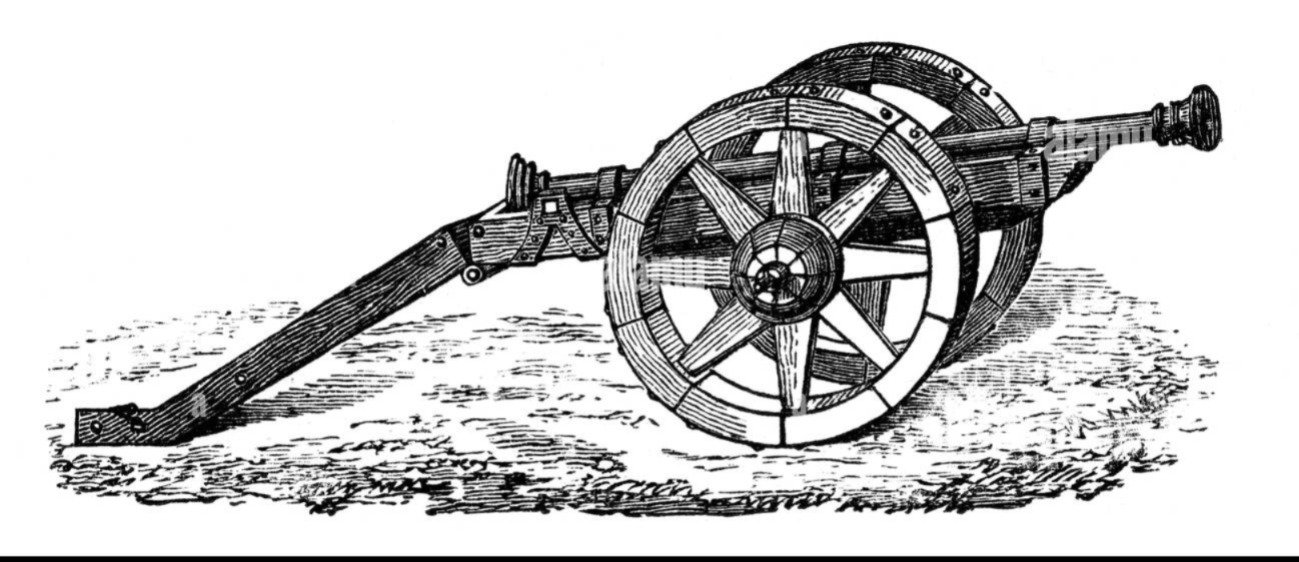
India heard the roar of cannons during the First Battle of Panipat (1526), when Babur deployed them against the mighty forces of Ibrahim Lodi. It was a turning point in Indian history, heralding the rise of the Mughal Empire.
The psychological impact of cannon fire on traditional armies, accustomed to swords and elephants, was immense. From Asia to Europe, artillery had now become a symbol of conquest.
17th Century: The Naval Revolution
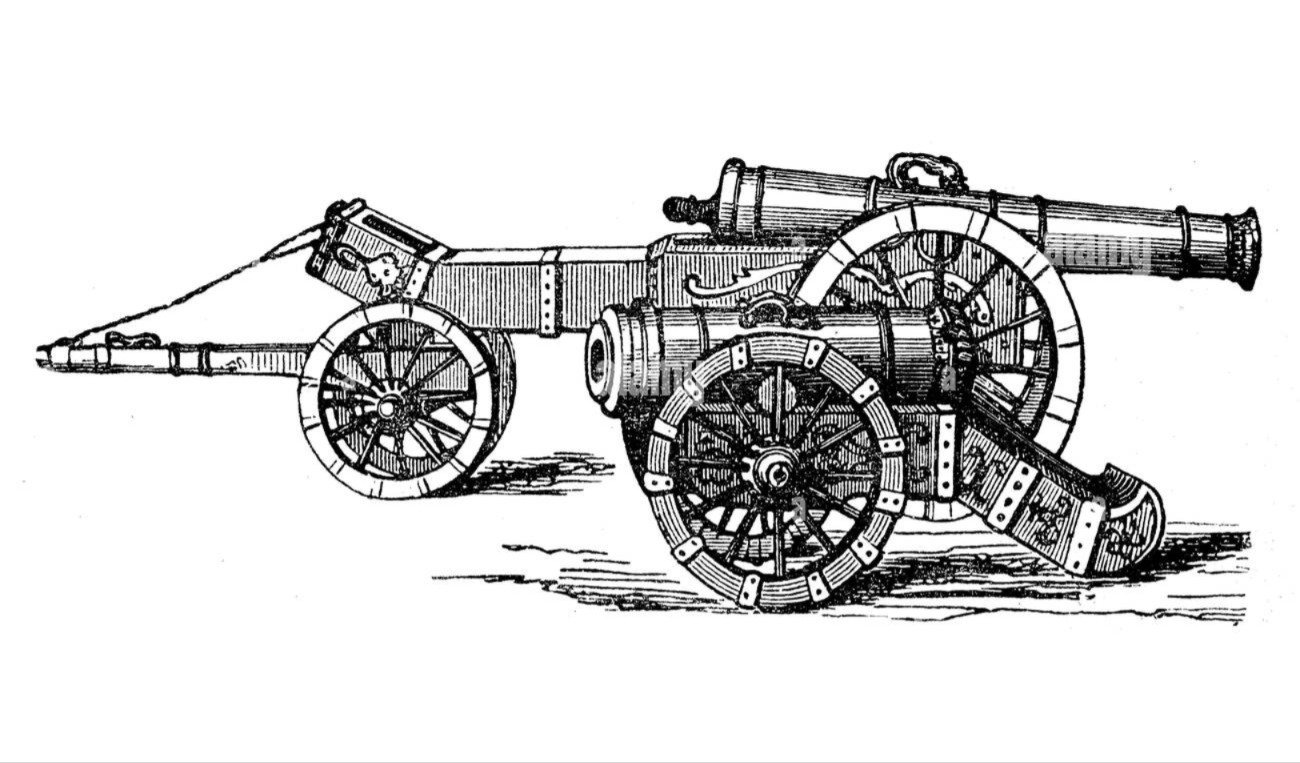
The sea too echoed with the voice of cannons. European warships, now equipped with deck-mounted guns, dominated the oceans. Powers like Britain, France, and Spain expanded their empires through naval artillery might.
From the fog of European harbors to the warm waters of India and the Americas, cannons dictated the fate of colonies.
18th Century: Standardization and a Revolutionary Invention
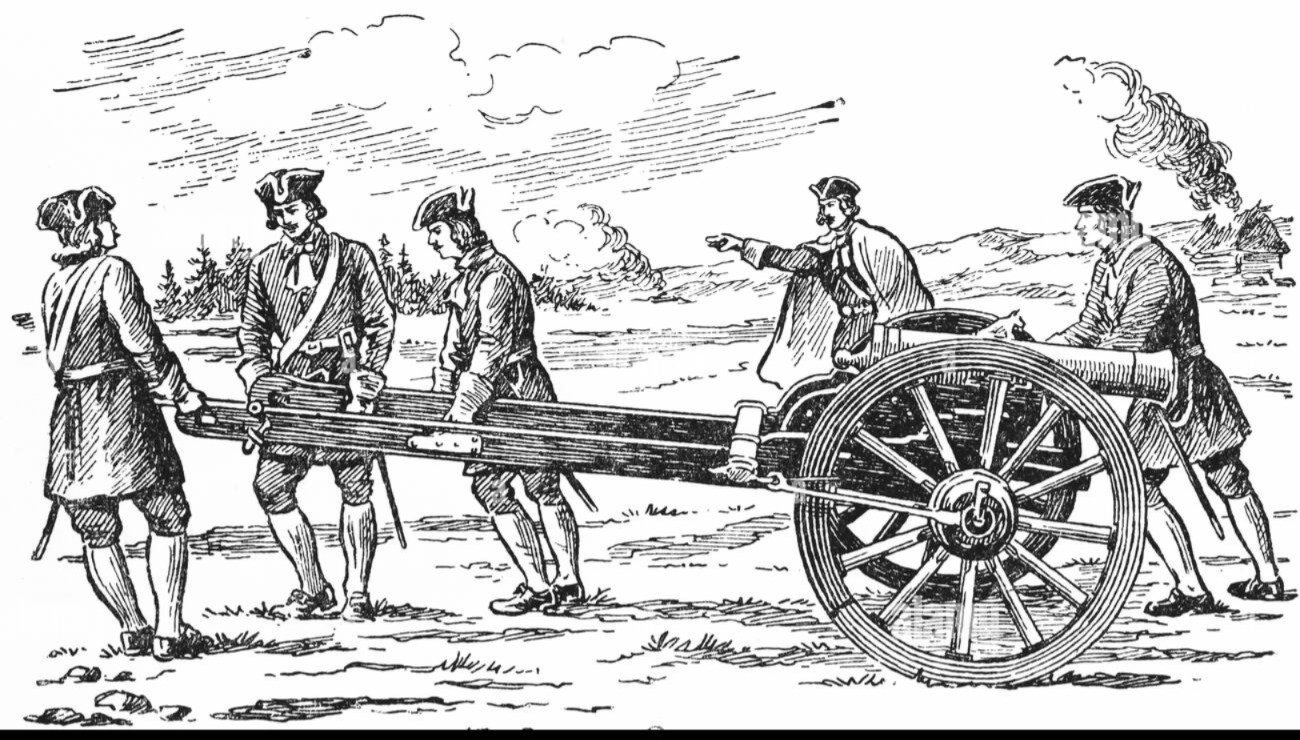
Artillery became more organized, categorized into field, siege, and naval cannons. Wars like the American Revolution, the Seven Years’ War, and colonial skirmishes saw strategic use of cannons.
A Revolutionary Innovation: 1769
Another pivotal moment arrived when French engineer Nicolas-Joseph Cugnot built a self-propelled, three-wheeled steam vehicle—the fardier à vapeur—to transport heavy artillery. Designed for the French army, this steam-driven drayage machine did not require horses or oxen.
While not the first use of wheeled cannon carriages (which existed as early as the 14th century), Cugnot’s invention was the first mechanical artillery transporter—a forerunner of today’s self-propelled guns.
Though heavy and slow, it offered a glimpse of a machine-driven future on the battlefield.
19th Century: The Industrial Art of War
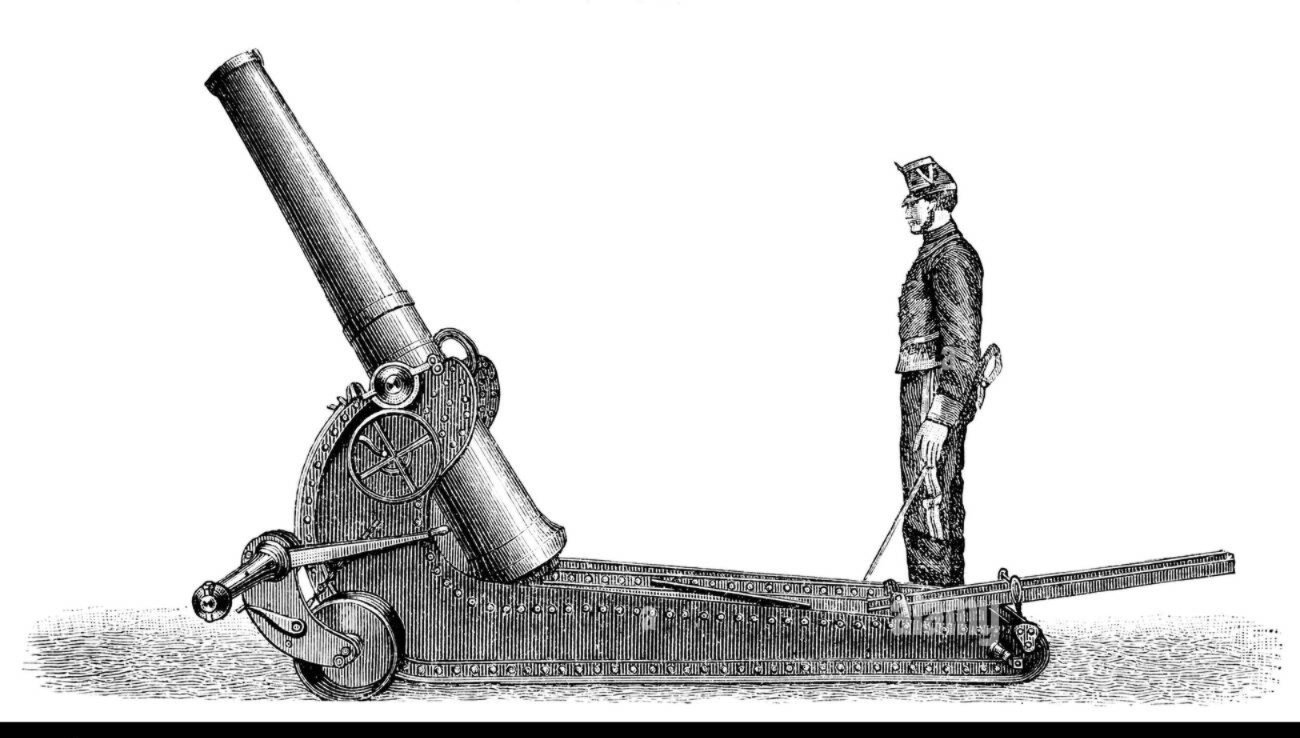
The Industrial Revolution ushered in innovations like rifled barrels, breech-loading mechanisms, and steel casting. Cannons became lighter, more accurate, and faster to reload.
Artillery was now mounted on railway tracks and used extensively in conflicts across Europe and colonial India, especially during the 1857 revolt, where both British and Indian forces relied on cannon fire.
20th Century: Canons of Global War
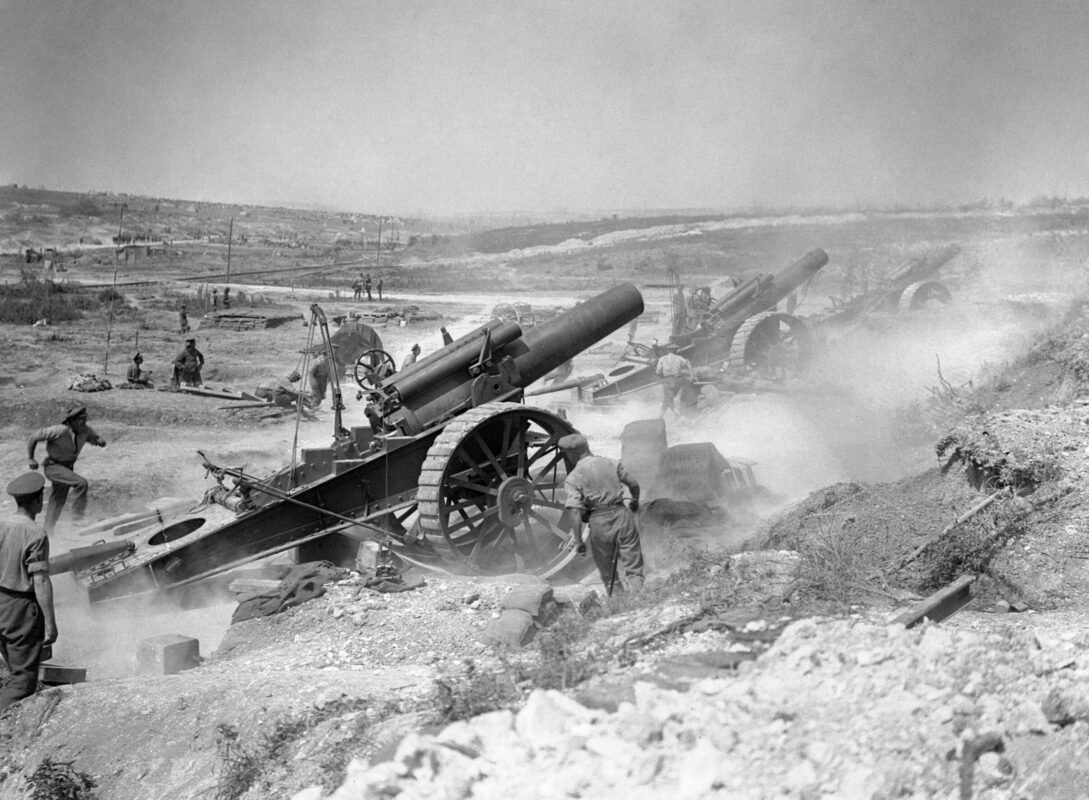
In the World Wars, cannons evolved into howitzers, anti-aircraft guns, and anti-tank artillery. Giant guns like Germany’s Big Bertha and Paris Gun rained destruction over vast distances.
Artillery fire was guided by improved optics, rangefinders, and later by radar and GPS.
Post-WWII, cannons became mobile, integrated with digital systems, and capable of coordinated fire in combined arms operations.
21st Century: Sophistication and Symbolism
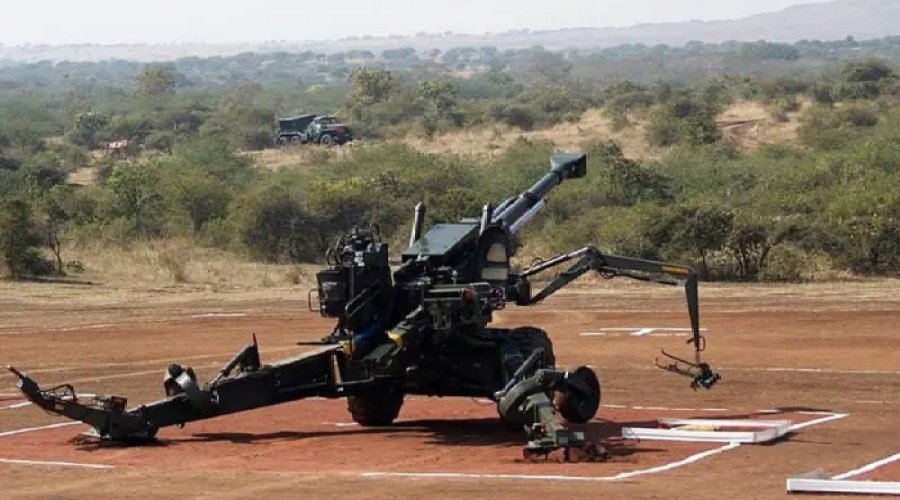
Today’s cannons serve dual identities:
In military arsenals, they are advanced machines equipped with satellite guidance, automated loading, and thermal imaging.
In civil life, they appear as ceremonial and decorative artifacts—emblems of valor and timeless design.
Why Cannons Remain Popular as Showpieces
A cannon is more than a weapon. It is a symbol of strength, heritage, and timeless craftsmanship. Once positioned outside forts and palaces, they now find a dignified place in homes, offices, and luxury spaces.
They tell stories of courage, resistance, and regality, offering a dramatic yet graceful touch to interiors.
Decorative Appeal: A Touch of Royal Armoury
Modern decorative cannons, especially in brass, bronze, or antique finishes, come with intricately detailed barrels and wheels. Their vintage elegance instantly adds character to any setting.
Whether displayed in a drawing room, study, office shelf, or entryway, cannons exude class, culture, and confidence.
Types of Cannons Available on Decowill

Decowill offers a diverse collection of decorative cannons, ranging in size, style, and detailing. Whether you seek a grand centerpiece or a compact desk accessory, there’s a cannon designed to enhance your space.
- Classic brass cannons with wooden bases.
- Antique-look miniature replicas.
- Heritage-themed collector pieces.
- Each piece is crafted to reflect authenticity and artistic brilliance.
Gifting a Cannon: A Regal and Symbolic Gesture
A cannon makes for a distinctive gift. Ideal for housewarmings, promotions, retirements, or corporate milestones, it offers history and beauty in one. It isn’t just décor—it’s a conversation starter.
When you gift a cannon, you gift a legacy.
Conclusion: Carrying Forward a Legacy in Metal
From the smoke of medieval battlefields to the shine of modern interiors, the cannon has never lost its aura.
At Decowill, we are proud to revive this heritage through handcrafted showpieces that embody the spirit of power, history, and precision.
Let the legacy of valor find a place in your space—with a cannon that speaks the language of kings and empires.
